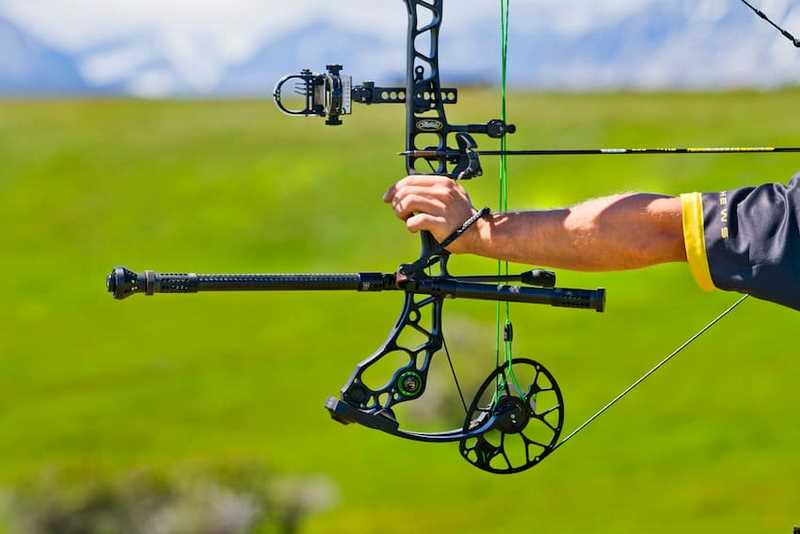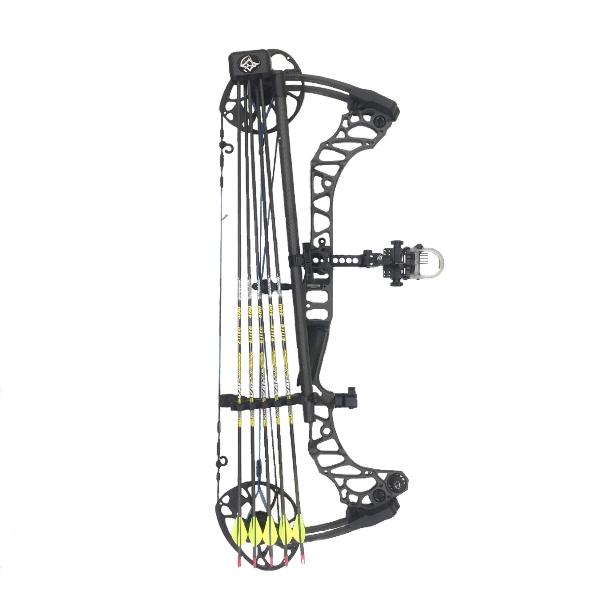Maximize Your Archery Efficiency With the Perfect Stabilizer: a Thorough Customer's Guide
In this extensive buyer's guide, we will explore the different kinds of stabilizers, crucial variables to take into consideration, the relevance of appropriate length and weight, choosing the best damping system, and maintenance suggestions. Whether you're a skilled archer or just starting out, this guide will help you browse the globe of stabilizers and optimize your archery performance.
Sorts Of Stabilizers
There are three major types of stabilizers frequently made use of in archery efficiency. These stabilizers play a critical function in enhancing precision and decreasing bow torque. The initial type is the long pole stabilizer. Long pole stabilizers are usually attached to the front of the bow and expand outwards. They give balance and security during the shot, minimizing any type of unnecessary activity. Lengthy rod stabilizers are specifically effective in lowering bow torque, enabling a much more consistent and steady launch.
The second type of stabilizer is the side pole stabilizer. Side pole stabilizers are affixed to the side of the bow and aid counterbalance any side motions.
The 3rd type of stabilizer is the V-bar stabilizer. V-bar stabilizers are normally made use of in combination with side rod stabilizers to even more enhance stability.
When picking the appropriate equipment to optimize archery efficiency,Understanding the different kinds of stabilizers is vital. Each stabilizer type serves a specific objective, and picking the ideal combination can dramatically improve precision and consistency on the range or in the area.
Trick Elements to Take Into Consideration

Firstly, it is important to take into consideration the length and weight of the stabilizer. Longer stabilizers offer boosted security and balance, while shorter ones supply more maneuverability. The weight of the stabilizer influences the overall balance of the bow, and it is crucial to locate a stabilizer that enhances the weight of your bow.
An additional vital factor to think about is the material of the stabilizer. Stabilizers are generally made from light weight aluminum, carbon, or a combination of both. Light weight aluminum stabilizers are durable and provide outstanding vibration dampening, while carbon stabilizers are lightweight and deal remarkable resonance absorption.
Additionally, it is essential to assess the design and adjustability of the stabilizer. Some stabilizers feature flexible weights and dampeners, permitting you to customize the equilibrium and resonance control. Additionally, considering the mounting alternatives and compatibility with your bow is important to make certain a correct and protected fit.
Last but not least, budget plan is a significant aspect to consider. Stabilizers can be found in a variety of rates, and it is vital to find one that fits within your spending plan while still meeting your efficiency requirements.
Value of Proper Size and Weight

Proper length and weight are essential aspects that dramatically affect the efficiency of an archery stabilizer. It is necessary to consider the shooting style, target range, and personal choice when selecting the size of a stabilizer.
Likewise, the weight of the stabilizer plays a vital role in accomplishing ideal efficiency. A larger stabilizer soaks up more vibration and reduces bow motion throughout the shot, causing a steadier aim and tighter groups. A stabilizer that is too hefty can create tiredness and affect the shooter's ability to hold stable. It is necessary to strike a balance in between weight and ability to move to facilitate comfy shooting and maintain uniformity.
Furthermore, the size and weight of the stabilizer should be suitable with the archer's physical stamina and capturing technique. By picking the right size and weight, archers can optimize their security, lower bow torque, enhance accuracy, and improve general efficiency. It is advised to speak with knowledgeable archers or experts to make certain the very best suit in between the stabilizer and private capturing needs.
Picking the Right Damping System
The choice of a proper damping system is important in enhancing the performance of an archery stabilizer. A damping system is designed to minimize the resonances and noise produced when an arrow is launched, providing the archer with a much more exact and stable shot. There are several aspects to think about when selecting the ideal damping system for your stabilizer.
To start with, it is essential to think about the sort of material made use of in the damping system. Rubber and rubber-like materials are frequently used because of their capacity to absorb resonance effectively. These products are additionally resilient and light-weight, making them ideal for archery stabilizers.
Secondly, the style of the damping system needs to be taken into consideration (archery stabilizer). Look for a system that supplies multiple call factors with the stabilizer, as this will disperse the resonances much more equally and further enhance the stabilizer's efficiency
In addition, take into consideration the adjustability of the damping system. Being able to fine-tune the level Click Here of damping can be advantageous, as various archers may have differing choices and shooting styles.
Lastly, it is essential to guarantee that the chosen damping system works with your stabilizer. Check the measurements and specifications to guarantee a proper fit.
Upkeep and Treatment Tips
To make certain optimal efficiency and long life of your archery stabilizer, it is necessary to implement appropriate upkeep and care techniques. Regular upkeep not just stops deterioration but likewise assists determine any prospective problems before they become major issues. One of the initial actions in maintaining your stabilizer is to cleanse it regularly. Use a soft towel or brush to remove dust, dirt, and particles from the stabilizer and its parts. Pay unique focus to the weight system, as dirt can accumulate in the strings and affect its capability. Furthermore, check all the components of the stabilizer for any signs of damage or wear, such as fractures or loose see it here screws. It is crucial to address them immediately to stop further damages if any type of problems are detected. Oiling the moving parts of the stabilizer, such as the dampers and weight system, is also crucial to make certain smooth procedure. Make use of a premium lubricant recommended by the maker and comply with the guidelines supplied. Finally, store your stabilizer in a trendy, dry location away from direct sunshine and extreme temperature levels to avoid warping or various other damage. By following these upkeep and care tips, you can make the most of the efficiency and long life of your archery stabilizer.
Conclusion
In final thought, selecting the right stabilizer for archery is essential for optimizing efficiency. With the ideal stabilizer and appropriate focus to these aspects, archers can boost their total archery experience.
The second type of stabilizer is the side pole stabilizer.The third type of stabilizer is the V-bar stabilizer. V-bar stabilizers are normally made use of in conjunction with side rod stabilizers to even more enhance stability. The weight of the stabilizer impacts the total balance of the bow, and it is crucial to locate a stabilizer that enhances the weight of your bow.
Light weight aluminum stabilizers are useful site long lasting and give superb resonance dampening, while carbon stabilizers are light-weight and offer premium resonance absorption.